

Introduction
It is more likely than not that Docker and containers are going to be part of your IT career in one way or another.
After reading this eBook, you will have a good understanding of the following:
- What is Docker
- What are containers
- What are Docker Images
- What is Docker Hub
- How to installing Docker
- How to work with Docker containers
- How to work with Docker images
- What is a Dockerfile
- How to deploy a Dockerized app
- Docker networking
- What is Docker Swarm
- How to deploy and manage a Docker Swarm Cluster
What is a container?
According to the official definition from the docker.com website, a container is a standard unit of software that packages up code and all its dependencies so the application runs quickly and reliably from one computing environment to another. A Docker container image is a lightweight, standalone, executable package of software that includes everything needed to run an application: code, runtime, system tools, system libraries, and settings.
Container images become containers at runtime and in the case of Docker containers – images become containers when they run on Docker Engine. Available for both Linux and Windows-based applications, containerized software will always run the same, regardless of the infrastructure. Containers isolate software from its environment and ensure that it works uniformly despite differences for instance between development and staging.

What is a Docker image?
A Docker Image is just a template used to build a running Docker Container, similar to the ISO files and Virtual Machines. The containers are essentially the running instance of an image. Images are used to share containerized applications. Collections of images are stored in registries like DockerHub or private registries.
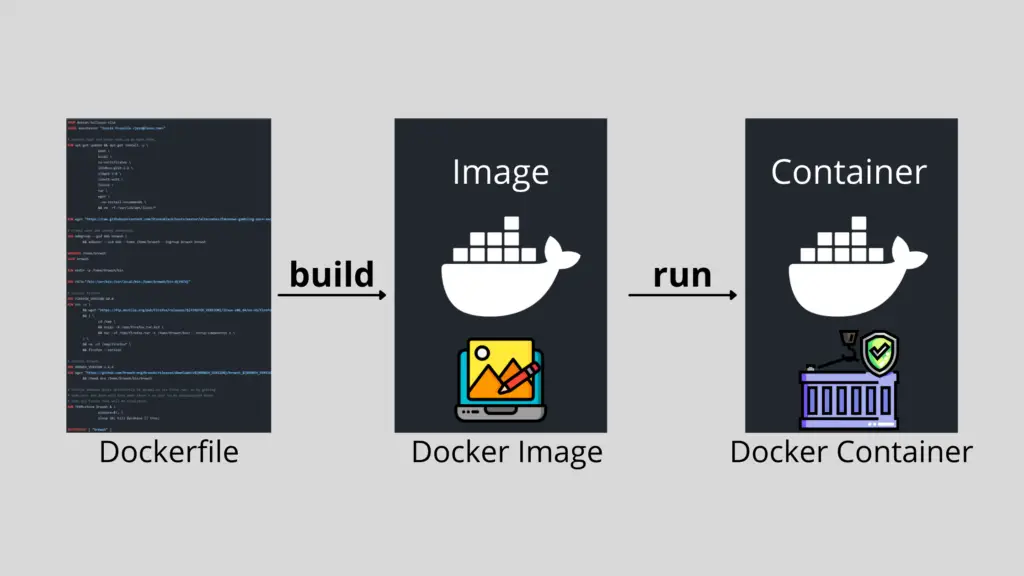
What is Docker Hub?
DockerHub is the default Docker image registry where we can store our Docker images. You can think of it as GitHub for Git projects.
Here’s a link to the Docker Hub:
https://hub.docker.com
You can sign up for a free account. That way you could push your Docker images from your local machine to DockerHub.
Installing Docker
Nowadays you can run Docker on Windows, Mac and of course Linux. I will only be going through the Docker installation for Linux as this is my operating system of choice.
Once your server is up and running, SSH to the Droplet and follow along!
If you are not sure how to SSH, you can follow the steps here:
https://www.digitalocean.com/docs/droplets/how-to/connect-with-ssh/
The installation is really straight forward, you could just run the following command, it should work on all major Linux distros:
wget -qO- https://get.docker.com | sh
It would do everything that’s needed to install Docker on your Linux machine.
After that, set up Docker so that you could run it as a non-root user with the following command:
sudo usermod -aG docker ${USER}
To test Docker run the following:
docker version
To get some more information about your Docker Engine, you can run the following command:
docker info
With the docker info command, we can see how many running containers that we’ve got and some server information.
The output that you would get from the docker version command should look something like this:

In case you would like to install Docker on your Windows PC or on your Mac, you could visit the official Docker documentation here:
https://docs.docker.com/docker-for-windows/install/
And
https://docs.docker.com/docker-for-mac/install/
That is pretty much it! Now you have Docker running on your machine!
Now we are ready to start working with containers! We will pull a Docker image from the DockerHub, we will run a container, stop it, destroy it and more!
Working with Docker containers
Once you have your Ubuntu Droplet ready, ssh to the server and follow along!
So let’s run our first Docker container! To do that you just need to run the following command:
docker run hello-world
You will get the following output:
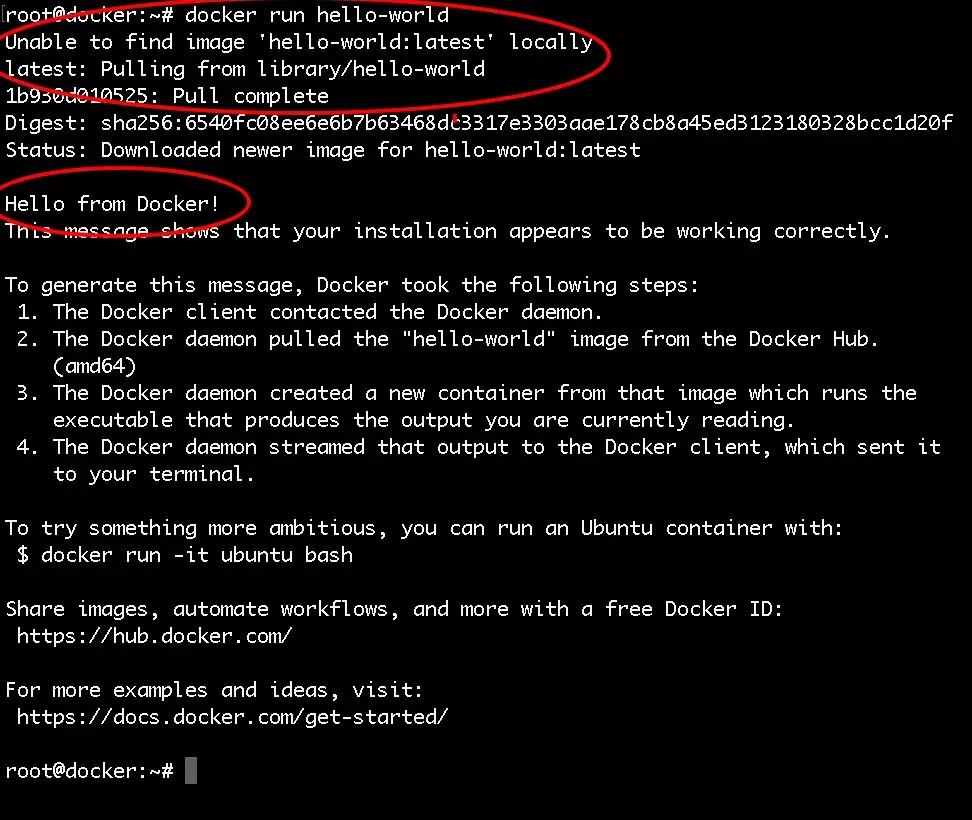
We just ran a container based on the hello-world Docker Image, as we did not have the image locally, docker pulled the image from the DockerHub and then used that image to run the container. All that happened was: the container ran, printed some text on the screen and then exited.
Then to see some information about the running and the stopped containers run:
docker ps -a
You will see the following information for your hello-world container that you just ran:
root@docker:~# docker ps -a
CONTAINER ID IMAGE COMMAND CREATED STATUS PORTS NAMES
62d360207d08 hello-world "/hello" 5 minutes ago Exited (0) 5 minutes ago focused_cartwright
In order to list the locally available Docker images on your host run the following command:
docker images
Pulling an image from Docker Hub
Let’s run a more useful container like an Apache container for example.
First, we can pull the image from the docker hub with the docker pull command:
docker pull webdevops/php-apache
You will see the following output:

Then we can get the image ID with the docker images command:
docker images
The output would look like this:

Note, you do not necessarily need to pull the image, this is just for demo purposes. When running the
docker runcommand, if the image is not available locally, it will automatically be pulled from Docker Hub.
After that we can use the docker run command to spin up a new container:
docker run -d -p 80:80 IMAGE_ID
Quick rundown of the arguments that I’ve used:
-d: it specifies that I want to run the container in the background. That way when you close your terminal the container would remain running.-p 80:80: this means that the traffic from the host on port 80 would be forwarded to the container. That way you could access the Apache instance which is running inside your docker container directly via your browser.
With the docker info command now we can see that we have 1 running container.
And with the docker ps command we could see some useful information about the container like the container ID, when the container was started, etc.:
root@docker:~# docker ps
CONTAINER ID IMAGE COMMAND CREATED STATUS PORTS NAMES
7dd1d512b50e fd4f7e58ef4b "/entrypoint supervi…" About a minute ago Up About a minute 443/tcp, 0.0.0.0:80->80/tcp, 9000/tcp pedantic_murdock
Stopping and restarting a Docker Container
Then you can stop the running container with the docker stop command followed by the container ID:
docker stop CONTAINER_ID
If you need to, you can start the container again:
docker start CONTAINER_ID
In order to restart the container you can use the following:
docker restart CONTAINER_ID
Accessing a running container
If you need to attach to the container and run some commands inside the container use the docker exec command:
docker exec -it CONTAINER_ID /bin/bash
That way you will get to a bash shell in the container and execute some commands inside the container itself.
Then, to detach from the interactive shell, press CTRL+PQ. That way you will not stop the container but just detach it from the interactive shell.
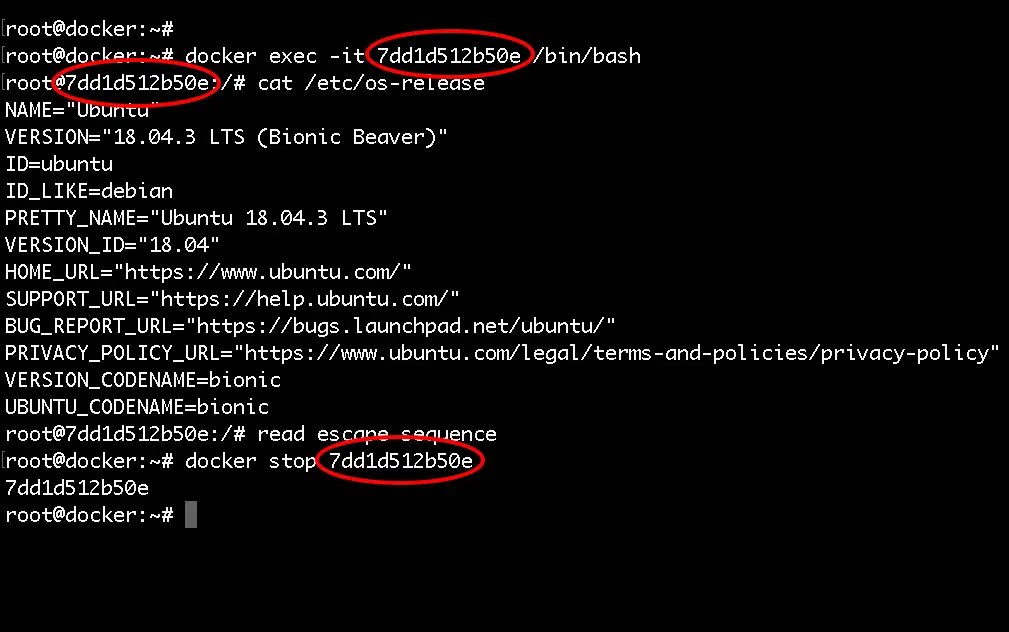
Deleting a container
To delete the container, first make sure that the container is not running and then run:
docker rm CONTAINER_ID
If you would like to delete the container and the image all together, just run:
docker rmi IMAGE_ID
With that you now know how to pull Docker images from the Docker Hub, run, stop, start and even attach to Docker containers!
We are ready to learn how to work with Docker images!
What are Docker Images
A Docker Image is just a template used to build a running Docker Container, similar to the ISO files and Virtual Machines. The containers are essentially the running instance of an image. Images are used to share containerized applications. Collections of images are stored in registries like DockerHub or private registries.
Working with Docker images
The docker run command downloads and runs images at the same time. But we could also only download images if we wanted to with the docker pull command. For example:
docker pull ubuntu
Or if you want to get a specific version you could also do that with:
docker pull ubuntu:14.04
Then to list all of your images use the docker images command:
docker images
You would get a similar output to:

The images are stored locally on your docker host machine.
To take a look a the docker hub, go to: https://hub.docker.com and you would be able to see where the images were just downloaded from.
For example, here’s a link to the Ubuntu image that we’ve just downloaded:
https://hub.docker.com/_/ubuntu
There you could find some useful information.
As Ubuntu 14.04 is really outdated, to delete the image use the docker rmi command:
docker rmi ubuntu:14.04
Modifying images ad-hoc
One of the ways of modifying images is with ad-hoc commands. For example just start your ubuntu container.
docker run -d -p 80:80 IMAGE_ID
After that to attach to your running container you can run:
docker exec -it container_name /bin/bash
Install whatever packages needed then exit the container just press CTRL+P+Q.
To save your changes run the following:
docker container commit ID_HERE
Then list your images and note your image ID:
docker images ls
The process would look as follows:
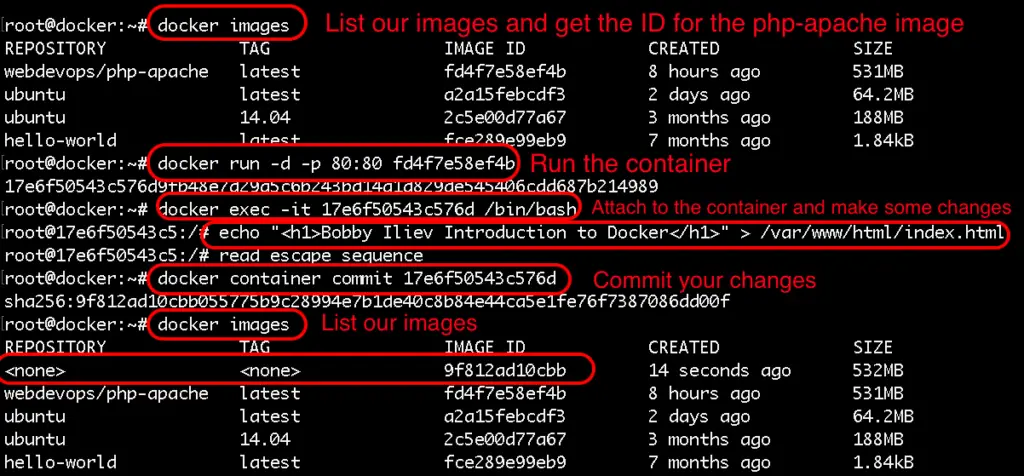
As you would notice your newly created image would not have a name nor a tag, so in order to tag your image run:
docker tag IMAGE_ID YOUR_TAG
Now if you list your images you would see the following output:

Pushing images to Docker Hub
Now that we have our new image locally, let’s see how we could push that new image to DockerHub.
For that you would need a Docker Hub account first. Then once you have your account ready, in order to authenticate, run the following command:
docker login
Then push your image to the Docker Hub:
docker push your-docker-user/name-of-image-here
The output would look like this:

After that you should be able to see your docker image in your docker hub account, in my case it would be here:
https://cloud.docker.com/repository/docker/yourID/php-apache
Modifying images with Dockerfile
We will go the Dockerfile a bit more in depth in the next blog post, for this demo we will only use a simple Dockerfile just as an example:
Create a file called Dockerfile and add the following content:
FROM alpine
RUN apk update
All that this Dockerfile does is to update the base Alpine image.
To build the image run:
docker image build -t alpine-updated:v0.1 .
Then you could again list your image and push the new image to the Docker Hub!
Docker images Knowledge Check
Once you’ve read this post, make sure to test your knowledge with this Docker Images Quiz:
https://quizapi.io/predefined-quizzes/common-docker-images-questions
Now that you know how to pull, modify, and push Docker images, we are ready to learn more about the Dockerfile and how to use it!
What is a Dockerfile
A Dockerfile is basically a text file that contains all of the required commands to build a certain Docker image.
The Dockerfile reference page:
https://docs.docker.com/engine/reference/builder/
It lists the various commands and format details for Dockerfiles.
Dockerfile example
Here’s a really basic example of how to create a Dockerfile and add our source code to an image.
First, I have a simple Hello world index.html file in my current directory that I would add to the container with the following content:
<h1>Hello World - Bobby Iliev</h1>
And I also have a Dockerfile with the following content:
FROM webdevops/php-apache-dev
MAINTAINER Bobby I.
COPY . /var/www/html
WORKDIR /var/www/html
EXPOSE 8080
Here is a screenshot of my current directory and the content of the files:

Here is a quick rundown of the Dockerfile:
FROM: The image that we would use as a groundMAINTAINER: The person who would be maintaining the imageCOPY: Copy some files in the imageWORKDIR: The directory where you want to run your commands on startEXPOSE: Specify a port that you would like to access the container on
Docker build
Now in order to build a new image from our Dockerfile, we need to use the docker build command. The syntax of the docker build command is the following:
docker build [OPTIONS] PATH | URL | -
The exact command that we need to run is this one:
docker build -f Dockerfile -t your_user_name/php-apache-dev .
After the built is complete you can list your images with the docker images command and also run it:
docker run -d -p 8080:80 your_user_name/php-apache-dev
And again just like we did in the last step, we can go ahead and publish our image:
docker login
docker push your-docker-user/name-of-image-here
Then you will be able to see your new image in your Docker Hub account (https://hub.docker.com) you can pull from the hub directly:
docker pull your-docker-user/name-of-image-here
For more information on the docker build make sure to check out the official documentation here:
https://docs.docker.com/engine/reference/commandline/build/
Dockerfile Knowledge Check
Once you’ve read this post, make sure to test your knowledge with this Dockerfile quiz:
https://quizapi.io/predefined-quizzes/basic-dockerfile-quiz
This is a really basic example, you could go above and beyond with your Dockerfiles!
Now you know how to write a Dockerfile, how to build a new image from a Dockerfile using the docker build command!
In the next step we will learn how to set up and work with the Docker Swarm mode!
Docker Network
Docker comes with a pluggable networking system. There are multiple plugins that you could use by default:
bridge: The default Docker network driver. This is sutable for standalone containers that need to communicate with each other.host: This driver removes the network isolation between the container and the host. This is suatable for standalone containers which use the host network directly.overlay: Overlay allows you to connect multiple Docker daemons. This enables you to run Docker swarm services by allowing them to communicate with each other.none: Disables all networking.
In order to list the currently available Docker networks you can use the following command:
docker network list
You would get the following output:
NETWORK ID NAME DRIVER SCOPE
3194399146e4 bridge bridge local
cf7f50175100 host host local
590fb3abc0e1 none null local
As you can see, we have 3 networks available out of the box already with 3 of the network drivers that we’ve discussed above.
Creating a Docker network
To create a new Docker network with the default bridge driver you can run the following command:
docker network create myNewNetwork
The above command would create a new network with the name of myNewNetwork.
You can also specify a different driver by adding the --driver=DRIVER_NAME flag.
If you want to create a Docker network with a specific range, you can do that by adding the --subnet= flag followed by the subnet that you want to use.
Inspecting a Docker network
In order to get some information for an existing Docker network like the driver that is being used, the subnet, the containers attached to that network, you can use the docker network inspect command as follows:
docker network inspect myNewNetwork
The output of the command would be in JSON by default.
You can use the docker inspect command to inspect other Docker objects like containers, images and etc.
Attaching containers to a network
To practice what you’ce just learned, let’s create two containers and add them to a Docker network so that they could communicate with each other using their container names.
Here is a quick example of a bridge network:
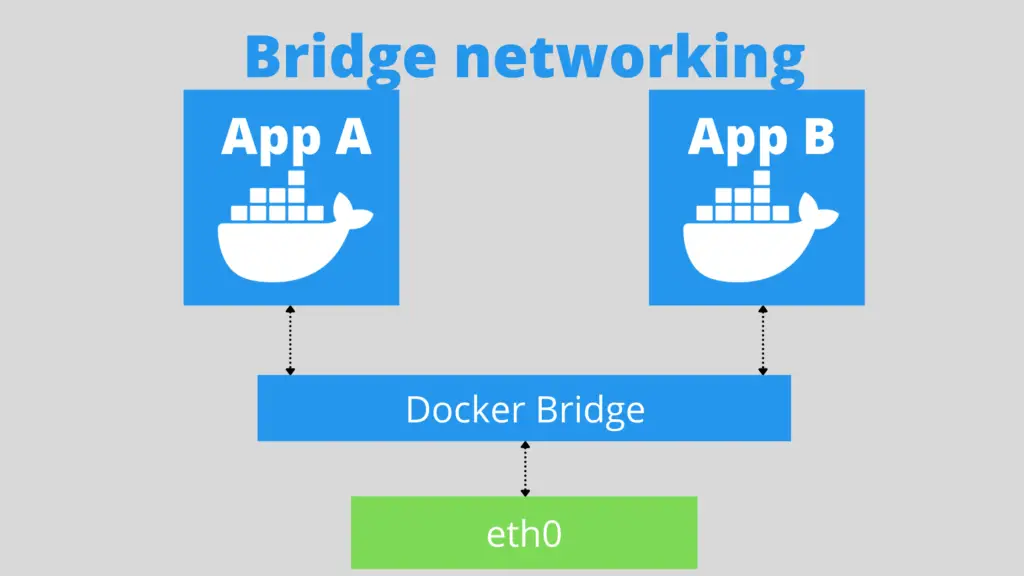
- First start by creating two containers:
docker run -d --name web1 -p 8001:80 eboraas/apache-php
docker run -d --name web2 -p 8002:80 eboraas/apache-php
It is very important to explicitly specify a name with
--namefor your containers otherwise I’ve noticed that it would not work with the random names that Docker assigns to your containers.
- Once the two containers are up and running, create a new network:
docker network create myNetwork
- After that connect your containers to the network:
docker network connect myNetwork web1
docker network connect myNetwork web2
- Check if your containers are part of the new network:
docker network inspect myNetwork
- Then test the connection:
docker exec -ti web1 ping web2
Again, keep in mind that it is quite important to explicitly specify names for your containers otherwise this would not work. I figured this out after spending a few hours trying to figure it out.
For more informaiton about the power of the Docker network, make sure to check the official documentation here.
What is Docker Swarm mode
According to the official Docker docs, a swarm is a group of machines that are running Docker and joined into a cluster. If you are running a Docker swarm your commands would be executed on a cluster by a swarm manager. The machines in a swarm can be physical or virtual. After joining a swarm, they are referred to as nodes. I would do a quick demo shortly on my DigitalOcean account!
The Docker Swarm consists of manager nodes and worker nodes.
The manager nodes dispatch tasks to the worker nodes and on the other side Worker nodes just execute those tasks. For High Availability, it is recommended to have 3 or 5 manager nodes.
Docker Services
To deploy an application image when Docker Engine is in swarm mode, you have create a service. A service is a group of containers of the same image:tag. Services make it simple to scale your application.
In order to have Docker services, you must first have your Docker swarm and nodes ready.

Building a Swarm
I’ll do a really quick demo on how to build a Docker swarm with 3 managers and 3 workers.
For that I’m going to deploy 6 droplets on DigitalOcean:

Then once you’ve got that ready, install docker just as we did in the Introduction to Docker Part 1 and then just follow the steps here:
Step 1
Initialize the docker swarm on your first manager node:
docker swarm init --advertise-addr your_dorplet_ip_here
Step 2
Then to get the command that you need to join the rest of the managers simply run this:
docker swarm join-token manager
Note: This would provide you with the exact command that you need to run on the rest of the swarm manager nodes. Example:

Step 3
To get the command that you need for joining workers just run:
docker swarm join-token worker
The command for workers would be pretty similar to the command for join managers but the token would be a bit different.
The output that you would get when joining a manager would look like this:

Step 4
Then once you have your join commands, ssh to the rest of your nodes and join them as workers and managers accordingly.
Managing the cluster
After you’ve run the join commands on all of your workers and managers, in order to get some information for your cluster status you could use these commands:
- To list all of the available nodes run:
docker node ls
Note: This command can only be run from a swarm manager!Output:

- To get information for the current state run:
docker info
Output:
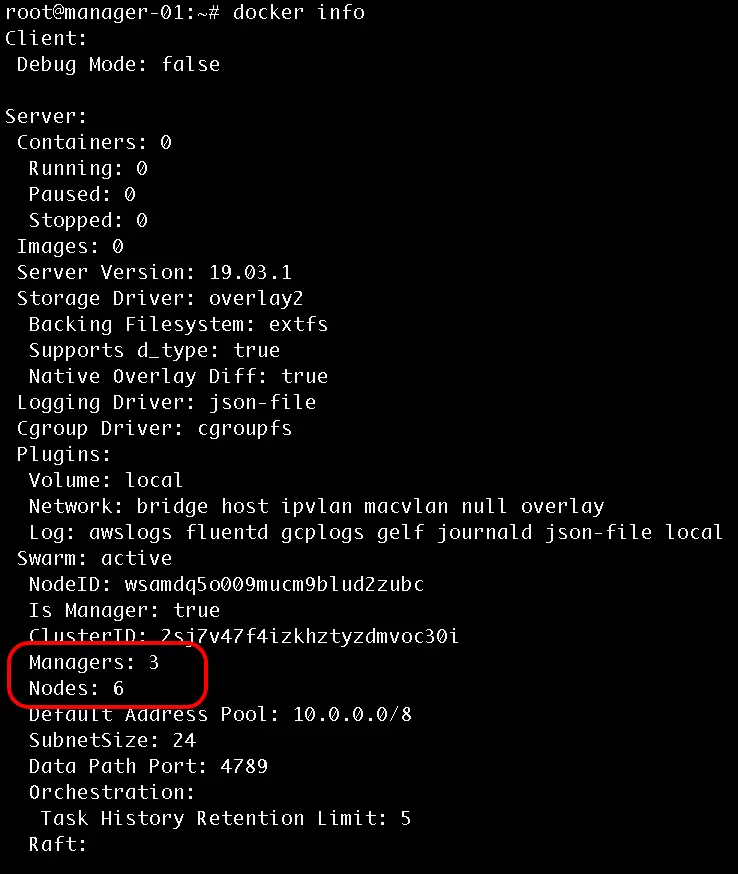
Promote a worker to manager
To promote a worker to a manager run the following from one of your manager nodes:
docker node promote node_id_here
Also note that each manager also acts as a worker, so from your docker info output you should see 6 workers and 3 manager nodes.
Using Services
In order to create a service you need to use the following command:
docker service create --name bobby-web -p 80:80 --replicas 5 bobbyiliev/php-apache
Note that I already have my bobbyiliev/php-apache image pushed to the Docker hub as described in the previous blog posts.
To get a list of your services run:
docker service ls
Output:

Then in order to get a list of the running containers you need to use the following command:
docker services ps name_of_your_service_here
Output:

Then you can visit the IP address of any of your nodes and you should be able to see the service! We can basically visit any node from the swarm and we will still get the to service.
Scaling a service
We could try shutting down one of the nodes and see how the swarm would automatically spin up a new process on another node so that it matches the desired state of 5 replicas.
To do that go to your DigitalOcean control panel and hit the power off button for one of your Droplets. Then head back to your terminal and run:
ocker services ps name_of_your_service_here
Output:

In the screenshot above, you can see how I’ve shutdown the droplet called worker-2 and how the replica bobby-web.2 was instantly started again on another node called worker-01 to match the desired state of 5 replicas.
To add more replicas run:
docker service scale name_of_your_service_here=7
Output:
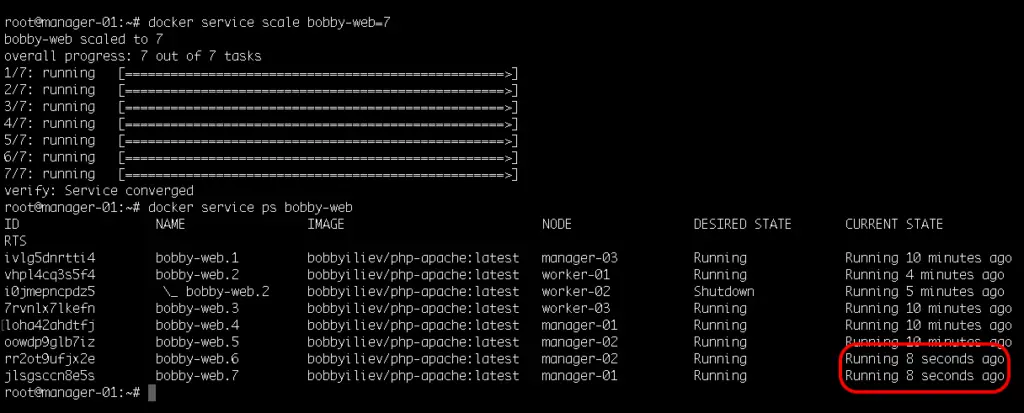
This would automatically spin up 2 more containers, you can check this with the docker service ps command:
docker service ps name_of_your_service_here
Then as a test try starting the node that we’ve shutdown and check if it picked up any tasks?
Tip: Bringing new nodes to the cluster does not automatically distribute running tasks.
Deleting a service
In order to delete a service, all you need to do is to run the following command:
docker service rm name_of_your_service
Output:

Now you know how to initialize and scale a docker swarm cluster! For more information make sure to go through the official Docker documentation here.
Docker Swarm Knowledge Check
Once you’ve read this post, make sure to test your knowledge with this
https://quizapi.io/predefined-quizzes/common-docker-swarm-interview-questions






















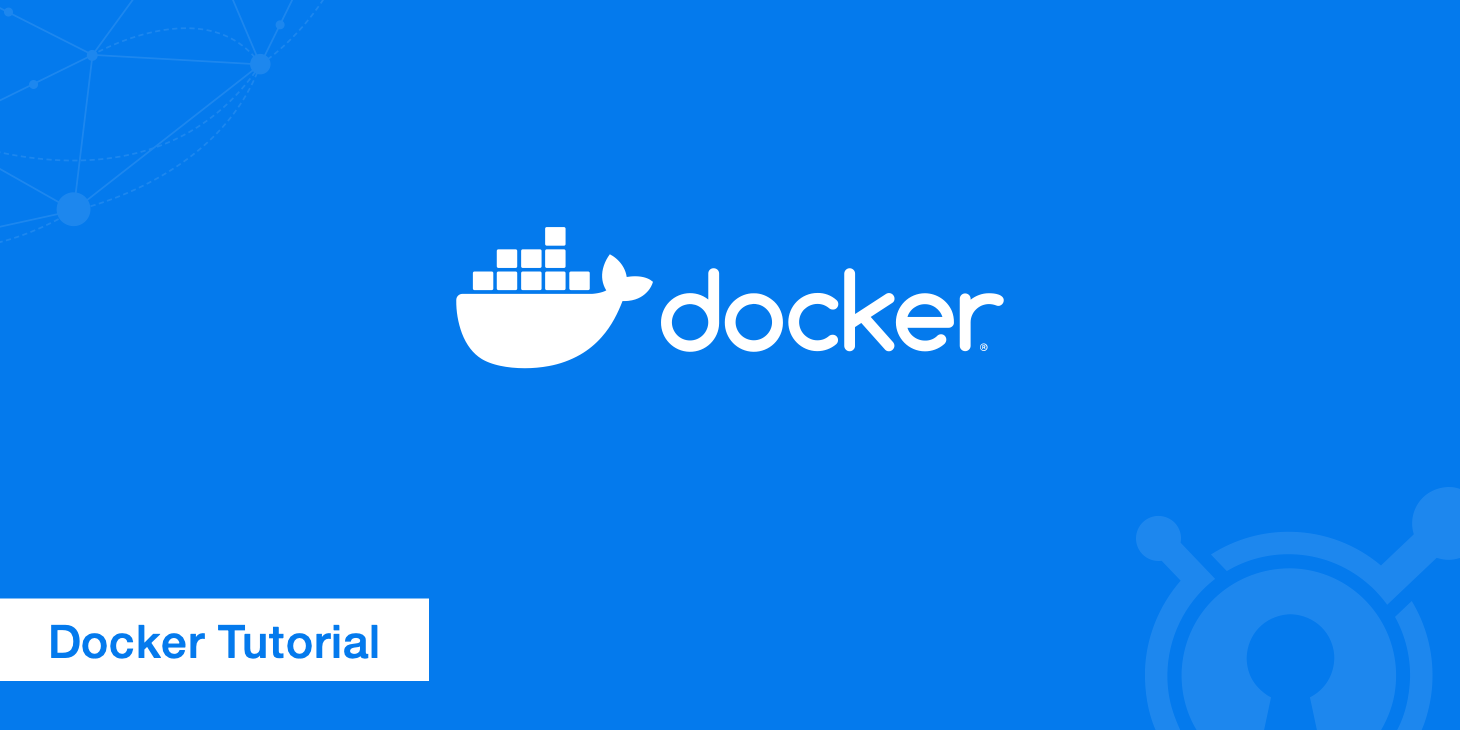





Leave a Reply